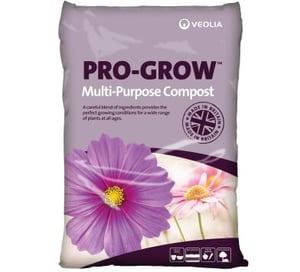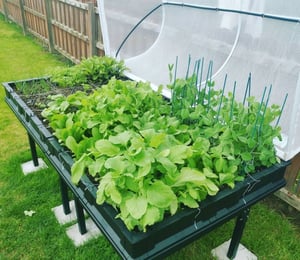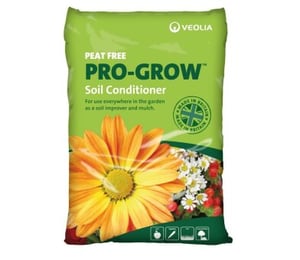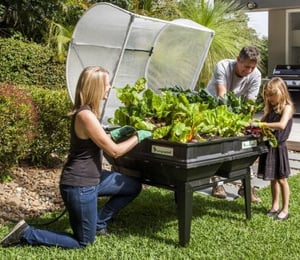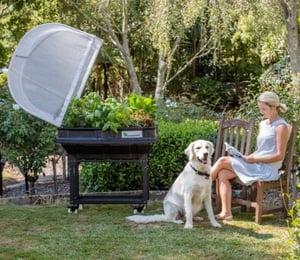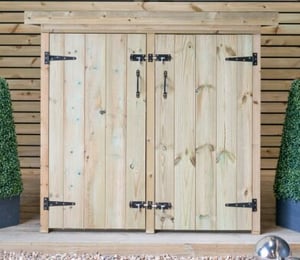How to Interest Children in Gardening
Certain challenges in life are easier to negotiate than others, Martyn Loach thinks that persuading children to become interested in gardening shouldn't be too difficult and can be very rewarding.

Certain challenges in life are easier to negotiate than others, Martyn Loach thinks that persuading children to become interested in gardening shouldn't be too difficult and can be very rewarding.

Gardening has various aspects to please any child i.e. getting dirty, digging holes and messing about with water, it should be a doddle.
Growing plants from seed is a good start and there are now several suppliers who offer seeds designed to encourage youngsters' interest.
Fast-growing varieties, brightly coloured plants, grasses that can be cut to shape or nasturtiums that are both colourful and edible.
Children won't generally take to the ordinary, what sparks their enthusiasm is the big, bright and brash.
Sunflowers fit into that category pretty well as do unusual shaped vegetables such as pumpkins that are both garish and useful as scary Halloween lanterns.
Plants that mature quickly such as salad leaves have a dual function. Firstly children don't have a great reputation for patience, so fast-growing produce goes some way to solving that problem, and secondly, they can eat what they grow which is a bonus.
The garden is full of creepy crawlies that should keep children fascinated and can be educational.
Who needs a book when you can teach children about nature's creepy crawlies by going outside and looking at the birds and the bees.
The fascinating way pollination works will be nearly as interesting as picking up an old log and discovering the way nature deals with recycling. The mass of insect life beavering away returning goodness to the earth from detritus is a lesson in ecology.
It couldn't be easier to attract birds to your garden, showing your children how many types there are, what they eat, which ones spend all year in Britain and which fly to hotter countries. Attach a fat ball to the clothesline and watch how quickly the squirrels learn to feed off it.
Leave pet food out for hedgehogs and explain how they, along with frogs, are the gardener's friends.
When the children get older and under supervision, a wildlife pond will be the source of hours of interest and learning.
Children should be inspired by the raft of TV wildlife programmes. So catching, drawing and photographing insects and other wildlife might encourage them to become the next Chris Packham if not Bill Oddie.
The compost heap should be full of wonder. Just why does it heat up so much, might it be those pesky bacteria. What are they and how does the composting process work, what comes out at the other end and why is it so good for the garden?
Creating a herb garden should be a delight. The soil doesn't have to be great, and if you don't have much of a garden they can easily be grown in containers.
The herbs are tactile and sensory, so play a blindfold game to see how many they can recognise by touch and smell. The children can also start to learn how to cook with them – anyone for lavender biscuits?
Leaves are everywhere, get the children to collect, identify, dry and put them in a scrapbook. Teach them the function of leaves, photosynthesis and the importance of sunshine, Cover up a patch of grass and, coming back the following week, see how it is has turned yellow.
Build your own sundial, a biro and a piece of cardboard is all you need. The biro can act as the 'gnomon' i.e. the sharp bit that casts a shadow, and then mark the cardboard each hour where the shadow has fallen. This simple device can inform children about the way the earth moves, the planets and ultimately the universe.
Designate part of the garden, preferably a sunny fertile plot, as your children's patch and let them grow what they want, whether this is vegetables, flowers or herbs. Get them to learn responsibility while enjoying everything the garden offers.
I would love to hear your ideas and tips on how you get your children involved in gardening.
Shop Now £239.99
Shop Now £329.00
Shop Now £179.99
Shop Now £219.00
Shop Now £149.00
Shop Now £29.99
Shop Now £322.00
Shop Now £428.00

.jpg)
